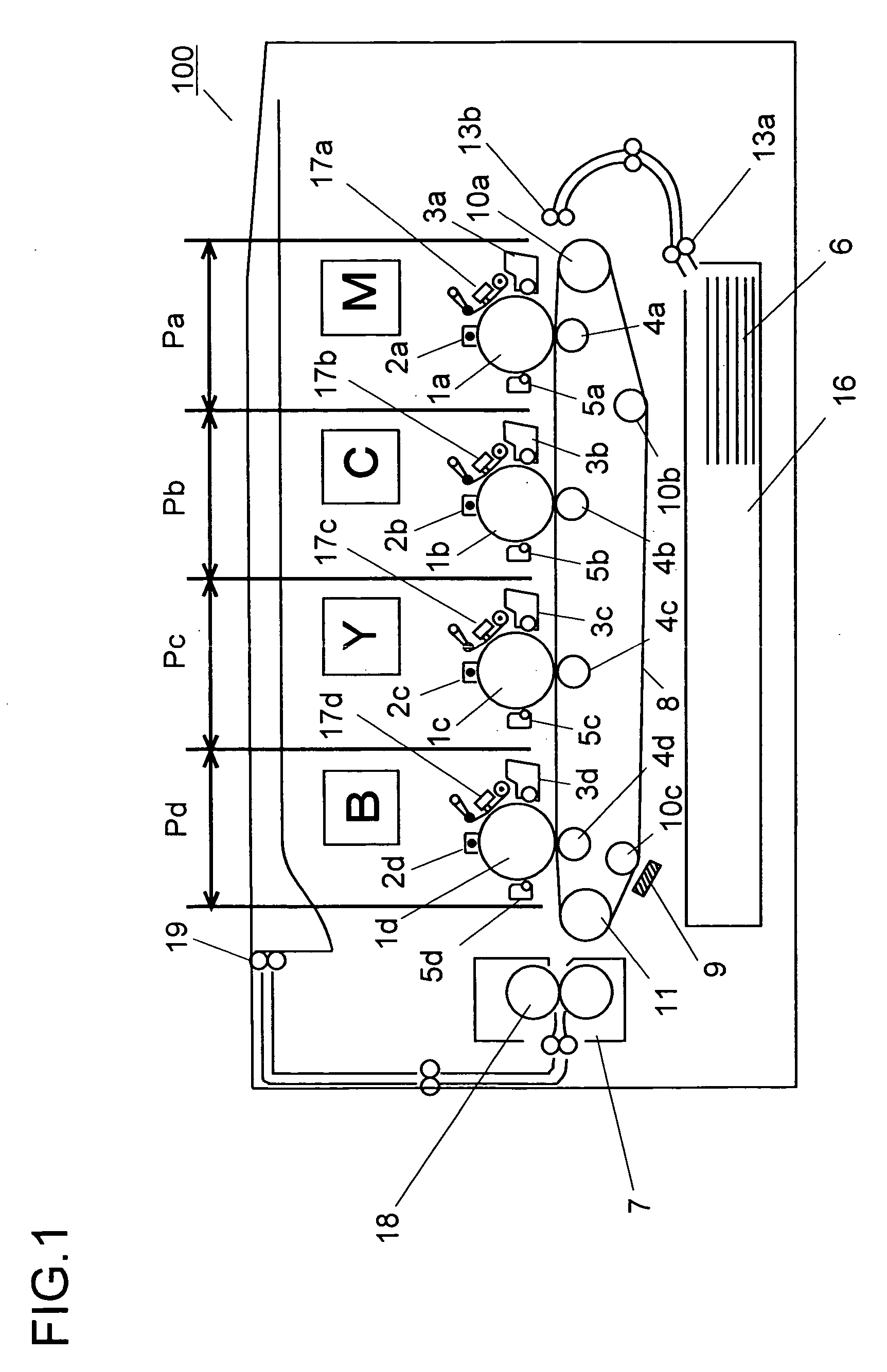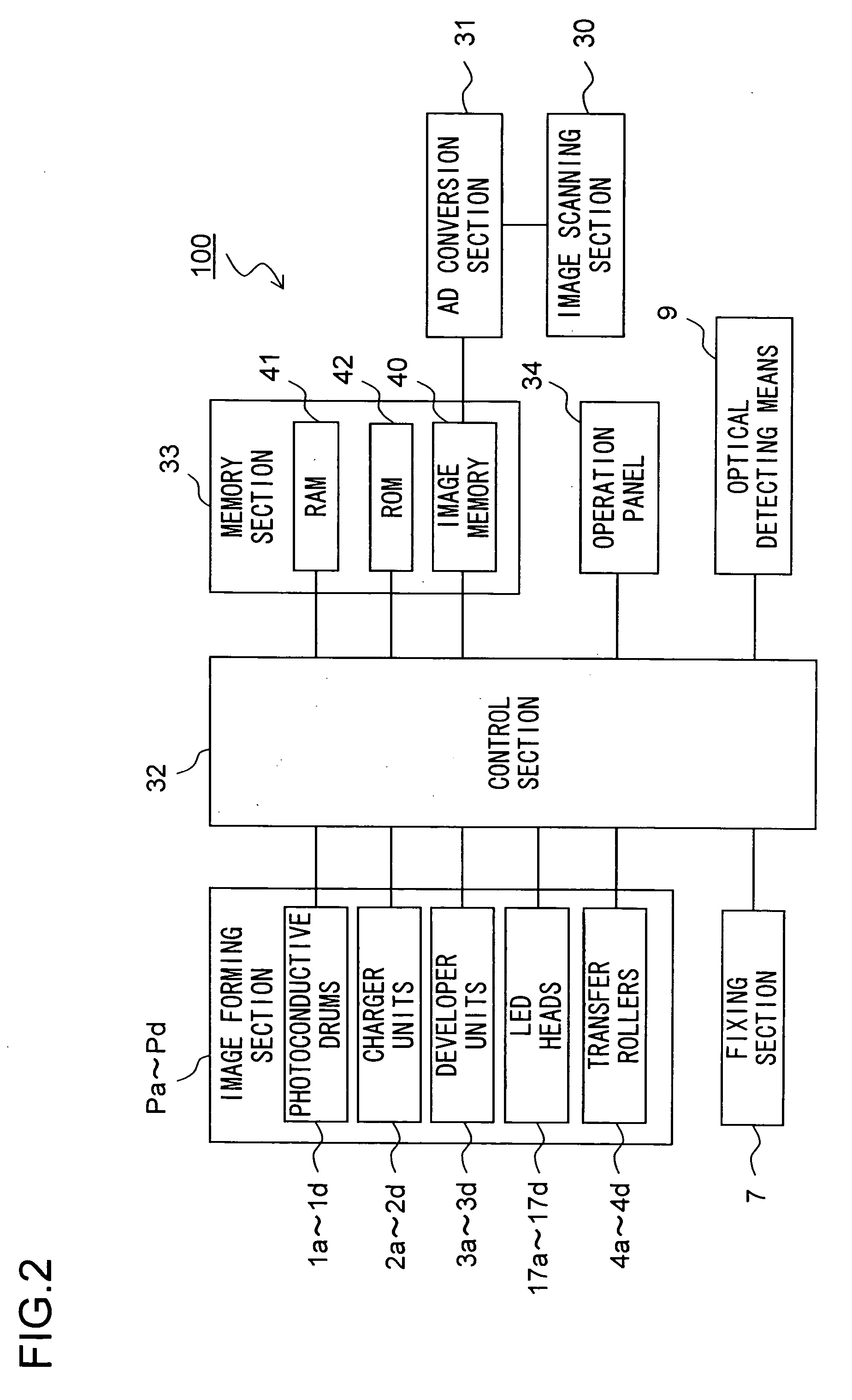Image forming apparatus
a technology of image forming apparatus and forming tube, which is applied in the direction of electrographic process apparatus, instruments, optics, etc., can solve the problems of low sensor output, difficult to perform precise detection of patch density, and inability to keep the initial surface condition, so as to prevent density loss
- Summary
- Abstract
- Description
- Claims
- Application Information
AI Technical Summary
Benefits of technology
Problems solved by technology
Method used
Image
Examples
Embodiment Construction
[0052] Hereinafter, with reference to the drawings, an embodiment of the present invention will be described in detail. FIG. 1 is a diagram schematically showing an image forming apparatus according to the present invention. Here, a tandem-type color image forming apparatus will be dealt with. Inside the body of the image forming apparatus 100, four image forming sections Pa, Pb, Pc, and Pd are arranged in this order from the upstream side (the right side in FIG. 1) of a transfer belt 8. These image forming sections Pa, Pb, Pc, and Pd are for forming images of four different colors (magenta, cyan, yellow, and black), and form a magenta, a cyan, a yellow, and a black image sequentially, each through an image forming process involving charging, exposure, development, and transfer.
[0053] In the image forming sections Pa, Pb, Pc, and Pd, photoconductive drums 1a, 1b, 1c, and 1d are arranged that carry visible images (toner images) of the different colors. The toner images formed on the...
PUM
 Login to View More
Login to View More Abstract
Description
Claims
Application Information
 Login to View More
Login to View More - R&D
- Intellectual Property
- Life Sciences
- Materials
- Tech Scout
- Unparalleled Data Quality
- Higher Quality Content
- 60% Fewer Hallucinations
Browse by: Latest US Patents, China's latest patents, Technical Efficacy Thesaurus, Application Domain, Technology Topic, Popular Technical Reports.
© 2025 PatSnap. All rights reserved.Legal|Privacy policy|Modern Slavery Act Transparency Statement|Sitemap|About US| Contact US: help@patsnap.com



